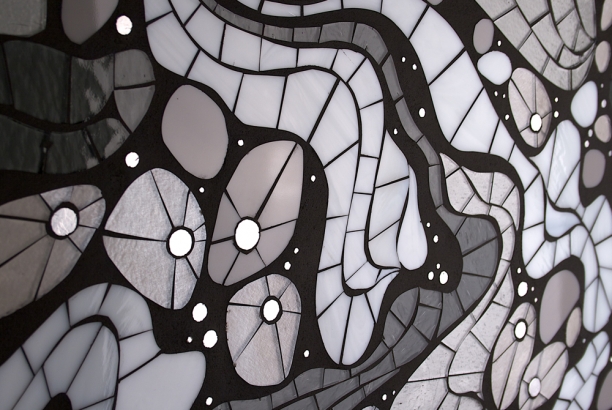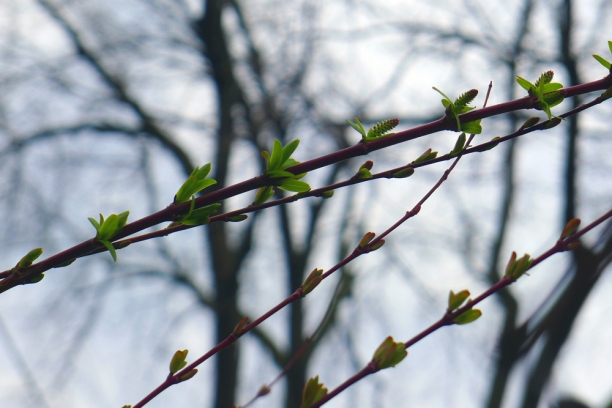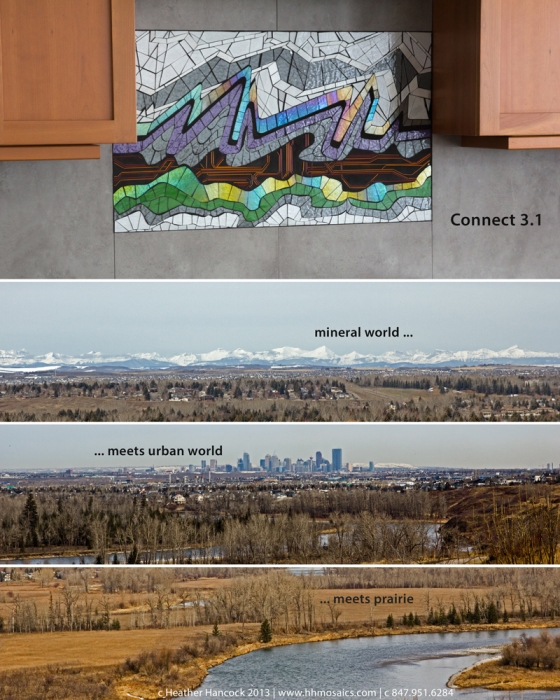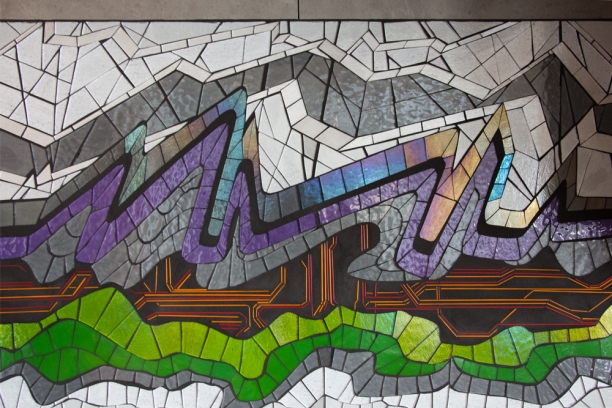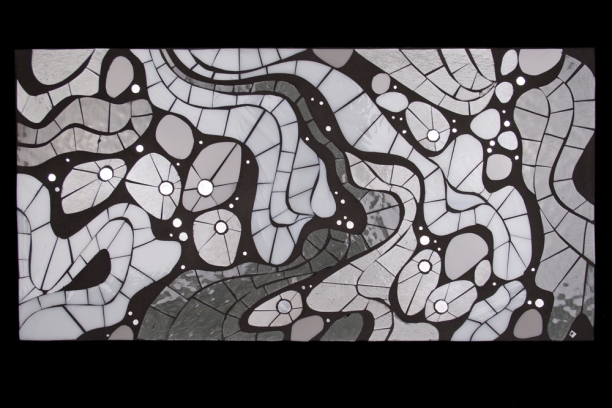Our information-decoding minds are naturally attuned to pattern in the world around us. Finding pattern and information within noise is deeply rewarding--and a critical survival skill. Work in the Scan series considers pattern-detection in the context of linguistic symbols. Abstracted text elements from construction material labels are transformed into powerful, elegant forms that tempt the viewer to decode and decipher. Expanding beyond the linguistic context, Scan 5.1 incorporates pattern and information from architectural elements found in the urban landscape.

Every time we drive the Chicago Skyway, I attempt to take images of the industrial corridor around Gary, IN. I can't resist the intricate geometry and repetition in the steel structures. The concepts of permanence and ephemerality are also present in the mismatch between the encoded information about structure and stability and longevity and the evidence of disrepair and decay and ruin.
In Scan 5.1, a collaged composition of abstracted architectural elements and linguistic elements, presents a broader approach to information-finding and and an entirely optimistic view of our interaction with place: there is beauty and information in structure. The geometry of a central pulley is reduced to its essence. Cut in warm ambers and animated with small points of iridescence, the form is re-imagined as an organic element. Stringer creates a lattice work, a kind of urban vine, based on smaller steel and cable structures. Grout creates the image of massive beams with the negative space completed in glass. Abstracted linguistic forms were cropped to emphasize curved and linking elements, pointing to the idea of letter forms as organic forms with endless creative potential.
Full set of images of Scan 5.1 can be seen here.


